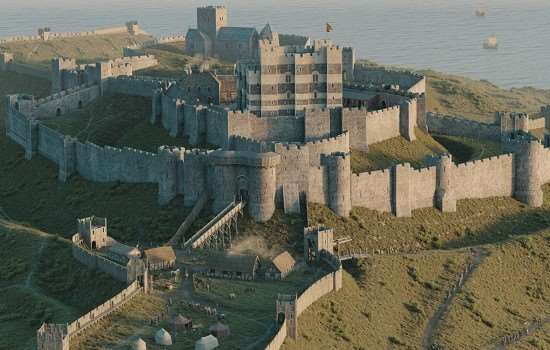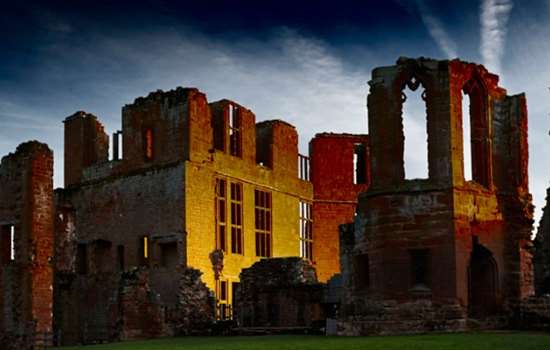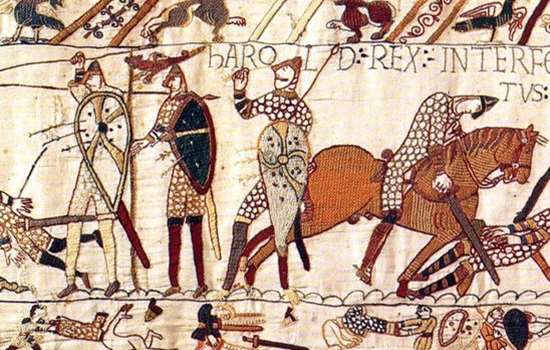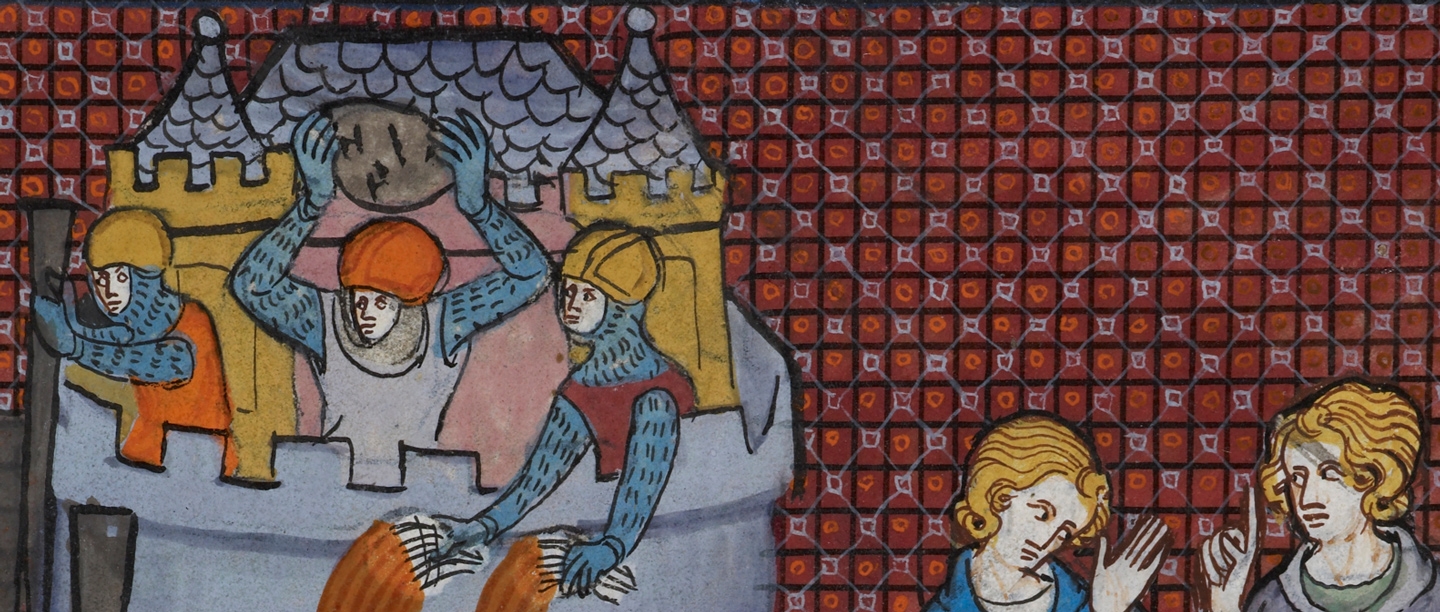Siege ‘Rules’
In an age where the elite acknowledged a chivalric code, there were clear, unwritten rules once a siege was in prospect. There were three possible outcomes:
- A successful assault by the attacking side, whereupon the defenders were at the mercy of the attackers, especially if the siege had been costly in soldiers and resources. It could result in massacre, execution, rape and plunder. Sometimes, men, women and children were treated equally harshly.
- The siege was settled on agreed terms by surrender of the defenders. In this case, usually only the elite could expect reasonable treatment and to leave with some possessions. The poorer people often lost their rights, possessions, homes and sometimes, their freedom.
- The siege was unsuccessful and ended by the attackers.
A siege required a lot of resource and was not lightly undertaken. Only the wealthy and powerful would have the means to maintain an assault for a long period of time. Conducting and resisting a siege required planning, expertise and experience, usually provided by specialised soldiers, some of whom were military engineers.
Sometimes, for those in charge it was easier and cheaper to surrender and walk away, than it was to risk siege and the consequent threat to life. At other times, there was too much at stake to give in.
Famous English Sieges
Famous sieges in England include those that took place during the First Barons’ War (1215–17) when King John (r.1199–1216) was in conflict with a large group of English barons supported by Prince Louis of France.
At Rochester Castle, Kent, in 1215, King John famously used fat from rendered pigs to fire a mine under the castle keep, bringing down one of its turrets. He successfully captured the castle after the siege lasted well over a month. During the same war, Dover Castle, also in Kent, was a target of two sieges in 1216 and 1217, which included the first recorded use of a trebuchet in England. The garrison successfully resisted both sieges.
At Kenilworth Castle, in Warwickshire, in 1266, a siege which lasted almost six months ended in an honourable surrender when the defenders’ food supplies were exhausted.
Read more on the Sieges of DoverThe Attackers’ View
The aim of any siege attack was to get into the castle as quickly as possible and there were a number of methods that could be used.
Attackers could break through the defences using weapons such as artillery or battering rams (see siege weapons below), followed by a well-armed force of soldiers – a storming party – fighting their way through the breach.
Miners were sometimes used to dig under the foundations of a castle wall to create a horizontal ‘sap’ or mine. At the end of a sap, the miners made a large cavity shored up with timber props and filled with combustible materials, which they set on fire, causing the wall above to collapse. Prince Louis of France used this method (among others) during the 1216 siege of Dover to bring down the eastern tower at the north gate of the great fortress.
The method of climbing over a defensive wall, known as ‘escalade’, would involve soldiers using ladders under covering fire from archers and siege engines. But this left them very exposed to the defenders’ arrows, stones and scalding liquids.
Sometimes huge siege towers on wheels were used by the attacking force. These towers were filled with soldiers on several levels connected by ladders. The towers had fighting platforms on top from which the castle battlements could be bombarded with arrows prior to a drawbridge being dropped onto the parapet for the assault troops.
Bombardment was also an effective means of attack. Siege engines fired arrows, bolts, stones and flaming projectiles to cause death, injury and fear among those on the receiving end.
And generally as a last resort, blockade and starvation could be used, though this was not desirable for either side as it could be lengthy and costly. The aim was to prevent anyone and anything arriving or leaving, so that the defenders’ resources dwindled, inducing starvation and disease. Water supplies were sometimes poisoned or tainted.
Terror and psychological warfare were also used in sieges. This could include public execution, mutilation and the display of captives.
The Defenders’ View
Good defence relied on foreknowledge so that careful preparations could be made. If possible, non-combatants were evacuated to preserve resources. Large supplies of food and water could be stockpiled, along with beer and wine if there was a possibility that the water supply could be poisoned: most castles had wells and cisterns for rainwater. A garrison would need to be large enough and experienced enough to resist what was often a bigger attacking force.
Military defensive measures included:
- Building up a large stock of missiles: arrows, bolts and stones.
- Storing supplies of inflammable liquids, such as oil and tar, ready for use, with facilities for heating them.
- Having supplies of timber, stone and earth to repair breaches in the walls during the siege.
- Digging countermines at strategic locations into which attacking miners could not avoid breaking, thereby being detected before they could damage the defences.
- Mounting siege engines on towers and walls, and inside the defences.
- Constructing brattices (hoards) on the walls, with overhanging timber galleries from which missiles, stones and hot liquids could be dropped on attackers below.
- Keeping long poles for use in pushing attackers’ ladders over.
- Positioning cranes with long chains and hooks for grabbing and overturning battering rams and bores.
Siege Weapons
Siege machines in western Europe derived from those used in the ancient world. Understanding medieval siege artillery is complicated by the lack of descriptive and illustrative sources. Some common types include:
- Battering rams, made from tree trunks with metal-shod heads, which were used to break down gates. Many were suspended from a wooden frame, covered by a strong wheeled wooden shed for protection.
- The bore was a wooden beam with a metal pointed end that could drill a hole in a wall.
- The ballista – a very large crossbow on a wooden frame, which fired a big arrow or bolt at high velocity, sufficient to pass through several people.
- The springald – a bow contained in a stout wooden box-frame. Unlike the ballista, the two arms of the bow were held in separate skeins of twisted hair or sinew, drawn back by a mechanical screw. Twisting the fibres to produce torsion, as well as drawing them back, produced even greater force, firing a bolt with massive velocity.
The mangonel (or perrier, or petraria) – a stone-throwing catapult powered by people. A wooden beam (throwing arm) was pivoted between two upright A-frames. One end of the beam was shorter and had multiple ropes hanging from it; the longer end had a sling containing the projectile, usually a large, rounded stone. One or more people pulled down sharply on the ropes and caused the beam to rotate so that the sling rose and released the projectile.
The counterpoise trebuchet – the most powerful stone-throwing catapult. Human power was replaced by a wooden box filled with heavy weights (a counterweight) at the short end of the throwing arm. The box was raised high by a mechanical winch and when released, the counterweight dropped, causing the beam to rotate and fire the projectile. Trebuchets were often enormous, firing weights in excess of a metric tonne that could demolish castle walls in a very short time.
Large stones, flaming barrels of tar and other incendiaries, containers of hot liquids, piles of dung, dead and diseased animals and dead people were all used as projectiles in mangonels and trebuchets.
By Paul Pattison
Explore More
-

The Sieges of Dover
Read about two sieges at Dover Castle in 1216 and 1217 when King John was in conflict with a large group of English barons supported by the French prince Louis of France.
-

The siege of Kenilworth Castle
Discover how Henry III’s assault on Kenilworth Castle, which began on 25 June 1266, turned into one of the longest sieges in English medieval history.
-

Medieval Warfare
From the Battle of Hastings to the Hundred Years War, learn more about wars in medieval times and some of the weaponry and tactics used.
